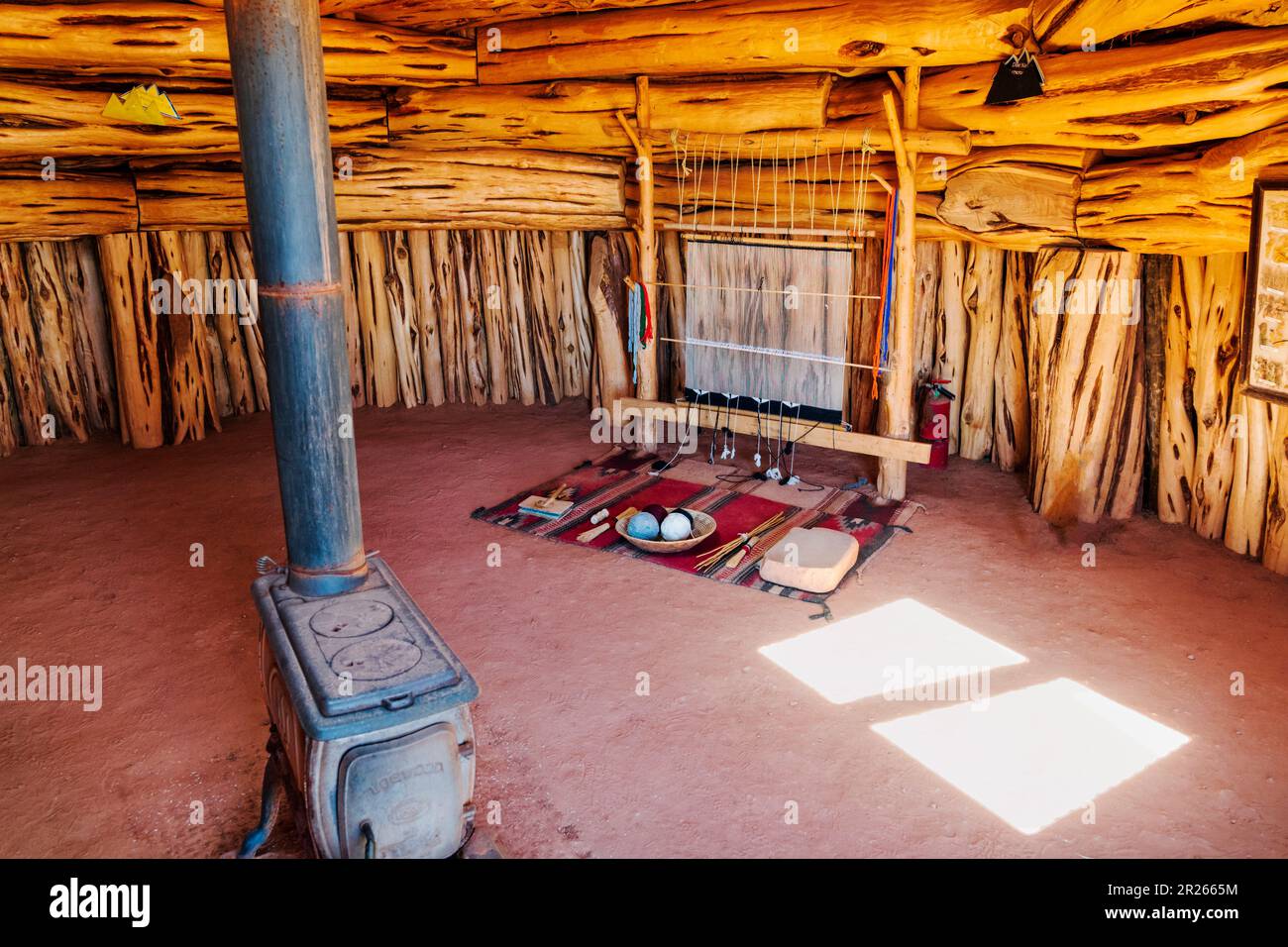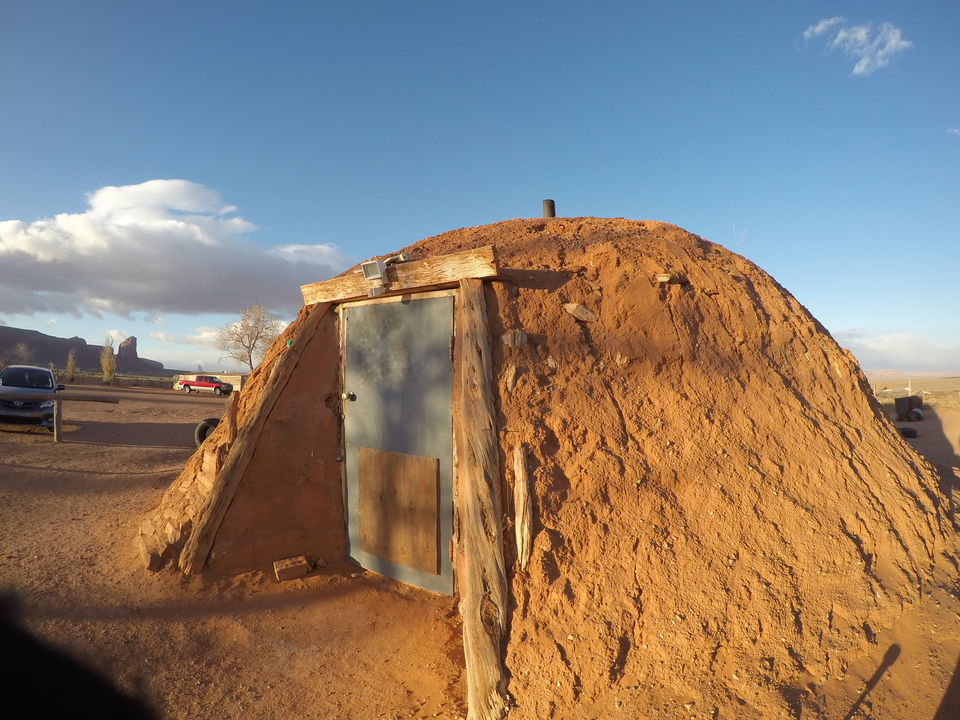
The Earth’s Embrace: Unpacking the Enduring Spirit of the Navajo Hogan
Nestled within the vast, awe-inspiring landscapes of the American Southwest, where the red earth meets an endless sky, stands a dwelling unlike any other: the Hogan. More than just a shelter from the elements, the traditional Navajo (Diné) Hogan is a living embodiment of culture, spirituality, and an unbreakable bond with the land. It is a structure whispered into existence from ancient narratives, a physical manifestation of the Diné universe, and a sacred space where ceremonies unfold, families gather, and generations connect to their ancestral roots.
In an era dominated by rapid urbanization and standardized architecture, the Hogan remains a powerful testament to indigenous wisdom and resilience. Its unassuming form belies a profound depth of meaning, offering lessons in sustainable living, spiritual harmony, and the enduring power of tradition. To truly understand the Navajo people is to understand the Hogan – a structure that is, at its core, a prayer made manifest in wood and earth.

A Blueprint from the Cosmos
The Hogan’s design is not arbitrary; it is a meticulously crafted blueprint derived from the Diné creation story and cosmological beliefs. Traditionally built from local materials—logs, earth, and sometimes stone—the Hogan comes in two primary forms: the conical or "male" Hogan, often built with three forked poles supporting a log framework covered with earth, and the more common "female" or "round" Hogan, which features a circular or hexagonal/octagonal base with cribbed logs rising to form a dome, capped by a smoke hole.
Regardless of its specific form, the most striking and consistent feature of every Hogan is its orientation: the single entrance always faces east. This is not merely a practical consideration for catching the morning light; it is deeply symbolic. The east represents the rising sun, the bringer of a new day, new life, and good fortune. It is from the east that the Diné believe blessings and positive energy enter the home, invigorating its occupants and the ceremonies held within.
"The Hogan is our first teacher," explains Sarah Begay, a Navajo elder from Monument Valley, her voice rich with the wisdom of generations. "When you step inside, facing the east, you are reminded of the sunrise, of new beginnings. It teaches us to start each day with purpose, with gratitude."
The smoke hole at the center of the roof serves a practical purpose, allowing smoke from the central fire to escape, but it also acts as a symbolic conduit, connecting the dwelling and its inhabitants to the sky world, the stars, and the cosmos. It is through this opening that prayers ascend and blessings descend, reinforcing the Hogan’s role as a microcosm of the universe.
The Sacred Geometry of Home
Step inside a Hogan, and you immediately feel a sense of peace and enclosure. The thick earthen walls provide natural insulation, keeping the interior cool in the scorching summer heat and surprisingly warm during the biting winter cold. The circular or multi-sided shape creates an intimate, communal space where there are no sharp corners, promoting a sense of unity and equality among those gathered.
Every element within the Hogan holds spiritual significance. The central fire, once the sole source of heat and light, is the heart of the home, representing warmth, sustenance, and the enduring spirit of the family. The four cardinal directions, aligned with the Hogan’s walls, correspond to the four sacred mountains that define the traditional Navajo homeland, connecting the physical structure to the vast spiritual landscape. The floor is the Earth Mother, and the ceiling the Father Sky, bridging the terrestrial and celestial realms.

"It’s not just a house; it’s a living prayer," says Raymond Tsosie, a cultural historian and Hogan builder. "When we build a Hogan, we are reenacting the creation of the Diné world. Each log, each handful of earth, is placed with intention, with reverence for the forces that sustain us."
The Hogan is the primary setting for many Diné ceremonies, from blessing ways (Kinaaldá) for young women entering adulthood, to healing ceremonies (Hózhóójí) designed to restore balance and harmony. These ceremonies, often lasting for days, utilize the Hogan’s sacred space to facilitate spiritual renewal and connection. The circular flow of these rituals mirrors the circularity of life, the seasons, and the cosmos itself, reinforcing the Navajo concept of Hózhó—"walking in beauty," a state of balance, harmony, and peace with all creation.
Building Tradition: A Community Effort
The construction of a traditional Hogan is a testament to communal effort and inherited knowledge. Historically, families and neighbors would gather to help raise the structure, a process that involved skilled craftsmanship and a deep understanding of local materials. Logs were carefully selected, shaped, and notched to fit together without the need for nails or complex tools. Earth was mixed with water to create a strong, insulating plaster, applied layer by layer.
The "forked-stick" Hogan, one of the oldest forms, involved interlocking three large forked logs to create a foundational tripod, against which smaller logs were leaned to form a conical shape, then covered with earth. The "cribbed-log" Hogan, often larger and more common today for ceremonial use, involves stacking logs horizontally, gradually decreasing the diameter with each layer to create a dome-like roof, capped by a central smoke hole.
Before construction even begins, and certainly upon its completion, blessing ceremonies are performed. These rituals, led by a medicine person (Hataałii), imbue the Hogan with sacred power, inviting positive spirits and ensuring the well-being of its future occupants. These ceremonies purify the space, dedicate it to sacred purposes, and seek blessings from the Holy People, solidifying the Hogan’s status as a spiritual sanctuary.
The Hogan in a Changing World
While modern housing has become increasingly prevalent on the Navajo Nation, the traditional Hogan has not faded into obscurity. Many Navajo families still maintain Hogans on their land, even if they live in modern homes, using them primarily for ceremonies, family gatherings, and as a quiet retreat for contemplation. For others, particularly in remote areas, the Hogan remains their primary residence, cherished for its connection to the land and its inherent resilience.
However, maintaining traditional Hogans presents challenges. The availability of suitable logs and earth can be limited, and the skills required for traditional construction are becoming less common among younger generations. The pull of modern conveniences like electricity, running water, and paved roads also draws many towards contemporary homes.
Despite these challenges, there is a strong movement to preserve Hogan-building traditions and to educate younger Navajo about their significance. Workshops teach traditional building methods, and cultural programs emphasize the spiritual and historical importance of these dwellings. For many, the Hogan is not just a relic of the past but a beacon of identity and cultural continuity in a rapidly changing world.
"My grandparents lived in a Hogan, and their grandparents before them," says Lena Yazzie, a young Diné artist who incorporates Hogan motifs into her work. "Even though I live in a modern house, the Hogan is always in my heart. It reminds me of who I am, where I come from, and the strength of our people."
An Enduring Legacy
The Navajo Hogan stands as a powerful symbol of adaptation, sustainability, and spiritual depth. It is a structure that teaches us about living in harmony with the environment, about the interconnectedness of all things, and about the enduring power of cultural identity. It is a testament to a people who have woven their beliefs into the very fabric of their homes, creating spaces that nourish not just the body, but also the spirit.
As the sun continues to rise each day over the vast Diné landscape, casting long shadows from the familiar earthen domes, the Hogan remains. It is a quiet, powerful presence, a silent guardian of traditions, and a profound reminder that true shelter extends far beyond walls and a roof – it encompasses the heart, the history, and the very soul of a people. The Earth’s embrace, indeed, continues to hold the Navajo people within its sacred, circular home.


